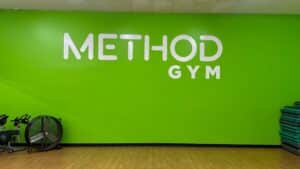When prospective members are looking for the right gym, price is one of the first and biggest factors they consider. The average cost of a gym membership in 2021 was $37.71, but that doesn’t mean that price will work for every fitness business. The right strategy for your membership pricing will depend on what you offer, where you’re offering it, and who you’re offering it to.
There are a number of questions you’re going to want to ask yourself as you evaluate your pricing model — what’s your membership value, what type of services do you offer, and so on. As you’re gathering the information and insights you need to accurately price your membership, keep these tips in mind to help you come up with the perfect number.
1. Pinpoint Your Revenue Sources
To accurately price your services, you first need to identify all your income sources and determine which revenue streams are your highest. This will help you figure out which services should be priced higher or lower compared to how much they take out of your operating budget.
Along with your standard memberships, some of your other revenue streams might be from personal training, group classes, retail products, fitness challenges and events, or nutrition and other wellness services. If your club management software has analytics and reporting tools, you can pull data from there to see exactly which services are bringing in the most and least revenue.
Top Tip: You can use your point of sale system to increase revenue streams. Here are some ideas to get you started.
2. Calculate Your Profit Margins
If you don’t price to profit, your club won’t be sustainable. To calculate your profit margins, it’s imperative that you know your operating costs thoroughly. Here are some examples of operating costs to factor in as you’re creating a membership pricing model:
- Rent
- Utilities
- Equipment
- Staff salaries
- Insurance
- Marketing/advertising
- Management software
You should also leave room for unexpected costs when you’re determining your profit margins, for things like equipment repair or unexpected closures.
3. Do Competitor Research
New prospects are going to be comparing your prices to those of other gyms as they’re deciding where to join, so you should be doing the same. Do some research into what comparable gyms in your location are charging for memberships, classes, and other services. Gauging existing prices will help ensure you don’t over or underprice yourself. As you’re looking at competitor prices, also consider the value they’re offering. Affordable memberships are important to prospects, but they’re also looking at your total value equation.
For example, let’s say your competitor offers a standard gym membership for $20 a month just for access to standard equipment. But with your membership, members get free online classes or the use of your hydromassage chairs. Although you may be in the same area and reaching for the same target audience, you can probably get away with a $30 per month membership because that price tag comes with greater value.
4. Know Your Target Audience
Speaking of target audience, yours is an important factor in your pricing strategy. Understanding your current and prospective members will help you determine how much they’re willing and able to pay for your services. You want to be careful not to price your audience out, but also to maximize your profits with a high enough price point.
When thinking about your target audience in terms of membership pricing, consider your location and demographics. Is your club in a high-income suburban neighborhood? Or a lower income area? Do your services attract more working-age adults or retirees with less disposable income? You’ll also want to consider what services your audience likes, how often they visit, and their fitness goals when determining how much they’re likely willing to pay.
5. Consider Tiered Pricing
Offering different levels of membership and pricing can make your club more accessible to a greater number of people. It also gives you more opportunities to upsell. Once you convert a lead with a lower-tiered price and they begin to use your facility, they’re more likely to be willing to pay for the perks of a higher membership tier.
There are a few different ways you can go about structuring your pricing tiers. The easiest is to offer a basic, standard, and premium monthly membership. Each tier should offer different inclusions and exclusions, such as attending multiple club locations or access to various parts of your club, like a basketball court or pool. You could also offer pricing based on membership length with pay-as-you-go, weekly, monthly, and annual options. If you offer a lot of group classes, you may want to have a separate pricing tier for classes and class packs.
Optimize Pricing, Payments & Revenue with ASF Payment Solutions
With ASF’s suite of club management tools, you’ll have everything you need to determine the best membership pricing strategy for your fitness business. Our software allows you to price your services with data-driven insights, manage your inventory with ease, upsell with streamlined POS, securely process member payments, and do so much more.
See what it’s like to let ASF do the heavy lifting for your fitness club and book a free demo today.





